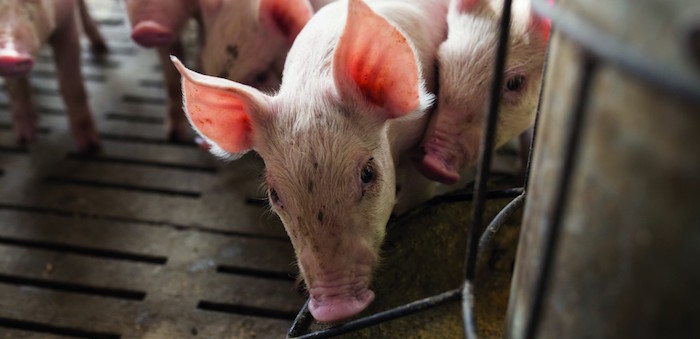Pig feed production between July and October, at 617,200 tonnes, was 41,200t lower than the same period in 2022, a 6.3% drop that will dampen expectations over imminent pig herd recovery.
The biggest losses were seen in link/early grower feed, down 14,600t, and pig finishing compounds, which saw a 26,700t drop.
“Lacklustre demand from the sector is likely linked to expectations of an ongoing high cost of production,” said Olivia Bonser, AHDB cereals & oilseeds analysts.
“As a result, anecdotal reports suggest that despite contractions last season, it’s unlikely the pig herd will see much expansion this marketing year keeping the demand outlook slow.”
AHDB’s latest GB animal feed production figures showed total GB animal feed production, including integrated poultry units (IPU), was down 1.9% on the year between July to October this season. This was the lowest level since 2016/17.
While the majority of animal feed categories are showing year-on-year declines, the key drivers of the fall are the pig, sheep and poultry compounders (excluding IPU) sectors.
For sheep, this season to date (Jul-Oct), feed production is down 17.1% or 28 Kt on the year.
The poultry sector looks the most optimistic in terms of year-on-year recovery for feed demand. Total poultry feed production is up 1% or 21,100 t so far this season, driven by increased production by IPUs.
Cereals usage
In terms of cereals usage, so far this season (Jul-Oct), usage of wheat, barley, maize and oats has totalled 1.57 Mt, down 3.6% from the same period in 2022/23.
In AHDB’s latest supply and demand estimates released last Tuesday, total cereals demand for animal feed in 2023/24 is forecast at 12.443 Mt, relatively unchanged on the year, but the second lowest level since 2016/17.
In terms of cereal splits, barley is the only cereal that has seen a yearly rise in usage, up 1.9% from July to October, due to its relative price seeing a greater percentage used in the ration. Wheat, maize and oats usage is down 2.7%, 36.4% and 19.9% respectively this season to date compared to 2022/23 levels.
“Looking ahead, it’s expected currently that barley will stay firm in rations in the short term but will be priced out by maize and wheat later in the season,” Ms Bonser said.
“As such, full season barley usage for animal feed is forecast relatively unchanged on 2022/23 levels currently, in the UK cereal supply and demand estimates released last month.
“Full season wheat and maize usage are both forecast up 1% this season from last. Finally, oat usage is not expected to feature heavily in rations for the remainder of the season and is therefore forecast down 21% on the year.”




